Headache
What is a Headache?
A headache is typically defined as throbbing, continuous, strong, or mild discomfort in your head or face. In terms of pain type, intensity, location, and frequency, headaches can vary widely.
Headaches can develop as a headache disease or as a consequence of another medical issue, such as an infection. Other symptoms associated with headache problems include alterations in vision and sensitivity to light or sound.
Headaches are a common occurrence for almost everyone.
A headache may impact any region of the head. Headaches can affect one or both sides of the head, and they can be localized, radiate throughout the brain from a single place, or feel like a vice.
Headaches can develop slowly or unexpectedly and last anywhere from a few minutes to many days.
Because headaches are such a prevalent condition, most people will experience them multiple times throughout their lifetime. They are the most common type of discomfort and a major cause of missed work or school days, as well as visits to healthcare specialists.
While the majority of headaches are harmless, some types may signal a more significant problem.
Experts estimated that 50 to 75 percent of adults had a headache in 2020. The majority of headaches are mild and short-lived, but occasionally they can be severe and interfere with your daily activities.
There are many different kinds of headaches, and there are many different factors that might cause them, such as our environment, the medications we take, and other things. There are numerous therapeutic options available to assist alleviate the discomfort.
You may learn more about different types of headaches, such as migraines, and the treatments that can help you live a better life.
In most cases, headaches occur at some point during a person’s lifetime. The major indicator of a headache is pain in the head or face. Tension headaches are the most prevalent of the several forms of headaches. The majority of headaches are harmless, but some may be signs of serious underlying illnesses.
Types of headaches:

More than 150 different types of headaches exist. Headaches can be divided into two basic categories: primary and secondary.
Primary Headache :
The overactivity or dysfunction of pain-sensitive brain areas causes primary headaches. They are neither a symptom nor a result of a medical condition. It’s possible that certain individuals are predisposed genetically to main headaches.
Primary headache types include:
- (The most frequent kind of headache) Tension-type headaches.
- Head pain from migraines.
- Cluster Headaches
- NDPH stands for new daily persistent headaches.
Multiple aspects of one’s way of life or specific situations, such as:
- Alcohol, particularly red wine.
- Certain meals, such as processed meats contain nitrates (food-induced headaches).
- Headaches are brought on by using nicotine.
- Sleep loss or a shift in sleep patterns.
- A poor stance.
- For instance, headaches may develop after physical activity.
- Skipped meals (headache from hunger).
- Coughing, sneezing, blowing your nose, straining (like when having a bowel movement), or laughing or sobbing loudly can all cause primary cough headaches.
Primary headaches can be excruciatingly unpleasant and interfere with your everyday activities, despite the fact that they are typically not harmful.
Secondary headaches:
Secondary headaches are brought on by an underlying medical problem. They are seen as an indication or symptom of an illness.
Some secondary headaches that aren’t necessarily harmful go away after therapy for the primary condition, including:
- Headache from dehydration.
- Headaches caused by the sinuses.
- Headaches from overusing medications.
The following secondary headaches could be a sign of a serious or even fatal condition:
Stress Headaches
The most common sufferers of tension headaches are adults and teenagers. They gradually go away and are mild to moderately painful. They typically show no additional symptoms.
Chronic Headaches
A migraine headache is commonly described as having a throbbing or hammering pain. They might persist for four hours or up to three days and often occur one to four times per month. Other symptoms include sensitivity to light, sound, or smells; nausea or vomiting; loss of appetite; and an upset stomach or pain in the abdomen, in addition to the discomfort. A child suffering from a migraine may appear pale, feel lightheaded, have blurred vision, a fever, and have an upset stomach. A small minority of youngsters with migraines experience gastrointestinal issues including vomiting about once a month.
Cluster headaches
These migraines are the worst. You might feel severe, scorching, or piercing pain behind or around one eye.
It may throb or be present constantly. Most cluster headache sufferers find it impossible to sit still during an episode because the pain can be so severe. Instead, they commonly pace. On the side of the pain, the eyelid droops, the pupil contracts, the eye becomes redder, or tears are produced. On the other side, the nostril runs or becomes blocked.
They are referred to as “cluster headaches” because they typically appear in groups. During a cluster phase, which could last two weeks to three months, you might experience them one to three times per day. A headache bout often lasts 15 to 3 hours. You may be roused from sleep by them. For months or years, the headaches can entirely stop (your doctor will refer to this as a remission), only to return later. Three to four times as many males as women will work on them.
Chronic Everyday Pain
You have this kind of headache for 15 days or more per month for more than three months. Some are not long. Others go more than four hours. It typically involves one of the four primary kinds of headache listed below:
- A persistent migraine
- A persistent tension headache
- New, ongoing headaches every day
- Hemicrania persists
Chronic headaches
When you get a sinus headache, you experience sudden, throbbing pain in your cheeks, forehead, or on the bridge of your nose. They develop when the sinuses, or cavities in your head, become inflamed. The pain frequently coexists with sinus symptoms such as a runny nose, ear fullness, fever, and facial swelling. Contrary to the clear discharge experienced during cluster or migraine headaches, a real sinus headache is caused by a sinus infection, so the mucus that comes out of your nose will be yellow or green.
Posttraumatic Headaches
Headaches following trauma
Posttraumatic stress headaches usually start to manifest two to three days following a head injury. As follows:
- A persistent dull pain that occasionally gets worse
- Vertigo
- Lightheadedness
- Difficulty concentrating
- Memory issues
- Tiring easily
- Irritability
For a few months, headaches can persist. Call the doctor if not feel well in a few weeks.
Exercise-related headaches
Exercise-related headaches, which are less common.
Your head, neck, and scalp muscles require more blood as you move about. For supply, your blood vessels enlarge. A pulsating headache on both sides of your head ensues, which may last for up to 48 hours. It often happens during or right after sexual or physical activities.
Hemicrania Continua
The same side of your face and head are almost always affected by hemiparesis continua, which are frequent, persistent headaches. Additional signs include:
- Varying degrees of pain
- Teary or red eyes
- Runny or congested nose
- Sagging eyelid
- Responds to the painkiller indomethacin in the contracted iris
- More painful when exercising
- Pain gets worse when drinking alcohol
Some individuals also experience migraine signs like:
-Nausea and diarrhoea
-Sensitivity to sound and light
The two are as follows:
- Chronic: Headaches plague you every day.
- You experience headaches that recur after six months. They depart for a few weeks or months before coming back.
Hormone Migraines
Hormonal changes that occur during menstruation, pregnancy, and menopause can cause headaches. Headaches can also result from hormonal changes brought on by birth control medications and hormone replacement therapy. Menstrual migraines are headaches that happen two days or three days into your cycle.
(NDPH) New Daily Persistent Headaches
These could come on suddenly and last for three months or more. Many people can probably recall the precise day when their agony began.
Doctors are unable to determine what causes this type of headache. Some people learn that it happens immediately following a stressful incident, an operation, or a contagious sickness like the flu.
Even though the discomfort is frequently mild, for some people it might be really bad. Additionally, treating it can be difficult.
Different symptoms may appear. Some of them resemble stress headaches. Others, such as those with nausea or light sensitivity, also experience migraine-like symptoms.
Call your doctor if your headache is severe or won’t go away.
Rebound Headaches
These may also be referred to as headaches from excessive pharmaceutical use. If you take a prescription or over-the-counter pain reliever more than two or three times per week or more than 10 days per month, you’re putting yourself at risk for increased discomfort. Once the prescription wears off, the pain returns, and you have to take more to stop it. This can lead to a dull, persistent headache that is frequently worse in the morning.
Ice pick headaches
It is a rare type of headache. Rarely do these piercing, intense headaches endure more than a few seconds. At most, they take place a couple of times every day. Visit your doctor if you have one. Ice pick headaches can exist on their own or be a symptom of another issue.
Spinal headache
When spinal fluid leaks from the membrane covering your spinal cord, usually after a spinal tap, it can cause severe headaches known as spinal headaches. Most spinal headaches can be managed at home, but chronic, untreated spinal headaches can have side effects that can be fatal, like subdural bleeding and convulsions.
If you experience a headache following a spinal tap, spinal block, or epidural, consult your doctor. Your doctor could use the term “puncture headache” to describe these procedures since they involve puncturing the membrane that protects your spinal cord. Spinal fluid leakage through the puncture site could cause a headache.
Thunderclap Headache
Thunderclap headaches are intense headaches that arise out of nowhere and are extremely painful. When spinal fluid leaks from the membrane covering your spinal cord, usually after a spinal tap, it can cause severe headaches known as spinal headaches.
Before the intensity of this type of headache reaches its climax, it lasts for at least five minutes. Even though thunderclap headaches might occasionally be harmless, it’s still important to seek medical attention right soon. They might indicate:
This headache is commonly described as the worst of your life. It abruptly appears out of nowhere and quickly peaks. Thunderclap headaches could result from:
- Rupture, blockage, or damage to blood vessels
- Head injury
- A brain blood artery rupture that results in a hemorrhagic stroke
- Blocked blood vessels in the brain lead to an ischemic stroke
- The brain’s surrounding blood arteries are narrowed
- Blood vessels inflamed
- Fluctuations in blood pressure during late pregnancy
- Cerebral vasoconstriction syndrome with reversibility.
- A sharp, unexpected increase in blood pressure.
Always take a new headache seriously. It frequently serves as your single indicator of a major issue.
Causes of Headache:
Headaches are uncomfortable because of the way your brain, blood vessels, and nearby nerves interact with electrical impulses. Multiple processes affect particular nerves that influence muscles and blood vessels during a headache. These nerves provide pain signals to your brain, which causes your head to ache.
Any area of the head can have a headache, and there may be one or several painful areas. Numerous pains might also be brought on by headaches. A classification of the pain may aid in the diagnosis.
In addition, doctors classify headaches according to whether an underlying medical condition is the source of the discomfort. The International Headache Society explains that a headache could be either primary or secondary.
Primary headache:
A simple headache does not indicate a more serious problem. Instead, issues with the head and neck structures are to blame for severe headaches.
Primary headaches, such as tension and migraine headaches, which are among the most common headaches for which people seek medical attention, affect an estimated 3 billion people annually.
This particular sort of headache is a condition in and of itself, not a sign of any other illness. Since it is the main issue, it is a “primary” headache.
These headaches are frequently brought on by stress and disturbances in your sleep schedule.
A primary headache may result from issues with or overactivity of pain-sensitive brain regions, such as:
- Certain regions of the brain
- Vascular system
- Muscles Nerves
- Brain substances
- Migraine, cluster, tension, and drug overuse headaches are a few of the more prevalent main headache diseases.
Secondary headaches:
This type of headache is a sign of a more serious illness. Secondary headaches appear as a sign of another medical condition. A headache can be brought on by a variety of diseases and conditions, including:
- Systemic disorders, like an infection, during pregnancy
- Hypothyroidism
- Massive cell arthritis
- Brain tumour and stroke
- Medication overuse
- High blood pressure
- Mental
- Pregnancy-related secondary headaches are frequently brought on by underlying illnesses including eclampsia and posterior reversible encephalopathy syndrome (PRES).
Serious medical conditions can cause secondary headaches. Life-threatening red signals that demand immediate care include:
- Neurological manifestations such as convulsions, unconsciousness, and confusion
- Fever
- Throbbing headaches
- Coughing, sneezing, or exercise-induced headache
- Those who have had malignancies in the past may experience headaches
- The person reached the age of 50
Additionally, it’s critical for someone to contact a doctor if their headache:
- The headache is severe or bothersome
- The headache is ongoing
- Regular headaches occur
- Medication does not relieve headaches
- Along with other symptoms including confusion, fever, sensory abnormalities, or acute neck stiffness, headaches can also occur.
A person’s headache discomfort is caused by a confluence of impulses between the brain, blood vessels, and surrounding nerves. Certain neurons in the head muscles and blood vessels activate, sending pain signals to the brain. The initial activation of these signals is not known, though.
The following are typical headache causes:
- Illness: This can include fevers, infections, and colds. Infections affecting the throat, ears, or sinuses, such as sinusitis (inflammation of the sinuses), can also cause headaches: Headaches may be the result of a blow to the head or, Almost never do they indicate a more serious medical condition.
- Stress: Depression and emotional stress, as well as drinking, missing meals, altering sleep schedules, and overmedicating.
- Environment: This includes things like secondhand smoke, strong perfume or chemical scents, allergies, and particular meals. Stress, noise, pollution, variations in illumination, and the weather are additional potential contributing variables.
- Genetics: Headaches, especially migraines, typically run in families. Genetic headaches, especially migraines, typically run in families.
- 90% of kids and teens who get migraines also have family members who suffer from them. There is a 70% risk that a child will have migraines if both parents have a history of them. The risk drops to 25%–50% if only one parent has a history of severe headaches.
- The specific etiology of migraines is unclear to medical professionals. According to one idea, migraines are brought on by a series of alterations brought on by an issue with the electric charge passing through nerve cells.
Adults who exercise excessively run the risk of developing migraines.
Do headaches run in families?
There is a tendency for migraines, in particular, to run in families. A child with migraines typically has at least one other biological parent who also has the condition. In fact, kids whose parents frequently get migraines are up to four times more likely to get headaches themselves.
- Eating specific foods or ingredients, such as alcohol, caffeine, fermented foods, chocolate, cheese, and so on.
- Exposure to allergens.
- Secondhand smoke.
- Strong odours from household chemicals or perfumes.
- Eating specific foods or ingredients, such as alcohol, caffeine, fermented foods, chocolate, cheese, and so on.
- Allergen exposure.
- Hand-to-hand tobacco.
- Strong perfume or home chemical scents.
Symptoms:
Depending on the type of headache, different symptoms may occur. Additionally, variables are the frequency of headaches and the severity of the symptoms. Common signs of a headache include:
- The headache gradually start
- Usually, both sides of the head pain.
- The pain in the head is dull or feels like a band or vice.
- The neck or the back of the head may be painful.
- There is some pain, but it’s not a lot.
- Usually, tension headaches do not result in nausea, vomiting, or a fear of light (photophobia).
- The signs of a headache can resemble those of other ailments or illnesses. Always get a doctor’s opinion before making a decision.
A headache can have a variety of characteristics and implications for day-to-day activities. headaches could:
- Either one or both of the head’s sides
- Radiate from a central point
- Involve sharp, throbbing, or dull pain
- Have a vice-like quality
- Come on gradually or suddenly
- Last for a short period of time to a few days.
- The characteristics of the pain are somewhat influenced by the type of headache.
Seek immediate medical attention if any of these headache signs apply to you or your child:
- A terrible headache that has just started.
- Headache accompanied by a fever, wheezing, neck stiffness, or rash.
- Headaches that follow a collision or head injury.
- After the age of 55, experienced a different kind of headache.
Additionally, if you get neurological symptoms in addition to your headache, such as:
- Weakness.
- Dizziness.
- Sudden fall or loss of balance.
- Tingling or numbness.
- Paralysis.
- Difficulty speaking.
- Bewilderment in the mind.
- Seizures.
- Unsuitable behavior/personality changes.
- Fuzzy vision, double vision, or blind spots are examples of visual alterations.
Diagnosis:
Usually, a headache type can be identified by a doctor by asking the patient about:
- Their indications
- Which kind of pain
- The frequency and timing of attacks
- The doctor may occasionally order or undertake tests to rule out more serious causes of headaches. Blood samples or imaging techniques like a CT or MRI scan may be used in the examinations.
How are headaches assessed and determined?
Contact your healthcare practitioner if you experience headaches frequently or if they are very severe.
Your doctor will want to perform a thorough physical examination and diagnostic procedures. As well as performing a physical examination and other tests, he or she will inquire about your medical history.
It’s critical to appropriately diagnose headaches so your doctor can recommend a targeted therapy to make you feel better. Your doctor will examine you physically, ask you about your medical history, and go over the symptoms and indicators of your headaches with you. The headache evaluation includes this talk.
During the headache evaluation, your doctor will ask you questions regarding your headache history, such as:
Examinees may be asked the following questions frequently:
- At what times do headaches happen?
- Where does the headache feel like it is?
- What are the symptoms of the headaches?
- When will the headaches stop?
- Has your personality or conduct changed?
- Does standing up or changing positions make the headache worse?
- Do you have sleep issues?
- Do you have a stressful past?
- Has there ever been a head injury?
- How painful a headache feels?
- How frequently do headaches occur?
- How much time does each headache last?
- How painful your headaches are?
- What causes your headaches—foods, beverages, or situations?
- How much coffee do you consume daily?
- How stressed you are?
- What your sleeping patterns are?
No more testing may be required if your doctor detects migraine or tension-type headaches and the neurological exam is unremarkable.
Other tests may be performed to determine the aetiology if the headache is not of the primary type.
Knowing the following will help your headache be diagnosed more accurately:
- The moment the headache began.
- Whether there is only one form of headache or several other sorts.
- If engaging in physical exercise makes your headache worse.
- Who else has headaches in your family?
- If any symptoms develop in between headaches.
Following the conclusion of the evaluation’s medical history section, your doctor may do physical and neurological exams. They will look for symptoms of a condition or illness that might be the cause of the headache, such as:
- Fever.
- Infection.
- Elevated blood pressure.
- Weakness, numbness, or tingling in the muscles.
- Excessive tiredness.
- Awareness loss.
- Issues with balance and frequent falls.
- Difficulties with the eyes, such as double vision and blind spots.
- Perplexity in the mind or personality change.
- Seizures.
- Dizziness.
- Vomiting and nauseous.
In order to rule out illnesses that could also cause headaches, neurological exams are performed. The onset of severe headaches may be attributed to a central nervous system problem.
The results of your headache history, physical exam, and neurological examination should allow your doctor to determine the type of headache you are having, whether a serious condition is present and whether additional testing is required.
They can suggest you see a headache specialist if they’re not sure what’s causing it.
Tests for diagnosis:
However, they cannot be used to diagnose migraine, cluster, or tension-type headaches. Scanners and other imaging tests are helpful for excluding other disorders.
However, if your doctor thinks that you have another medical condition that is causing your headaches, they may ask for one of several imaging tests.
Blood test: To look for underlying problems, several blood chemistry and other lab tests may be performed.
X-rays of the sinuses: A diagnostic imaging method used to check for obstructions or other issues that could be fixed.
A CT scan or MRI can be performed to determine whether an issue with your central nervous system is the source of your headaches. The cross-sectional scans of your brain produced by these two tests can reveal any abnormal regions or issues.
(MRI) Magnetic resonance imaging: A test that creates precise images of the body’s organs and architecture using a mix of powerful magnets, radiofrequency technology, and computers.
CT or CAT scans are other names for computed tomography scans: A diagnostic imaging procedure that creates axial or horizontal images of the body—often referred to as slices—using X-rays and modern technology.
Treatment:
The basic treatments for headaches are rest and painkillers.
Options consist of:
- Prescription pain medications
- Nonsteroidal anti-inflammatory medicines, for example, are available over-the-counter.
- Preventive medication for specific illnesses like migraines, and various treatments for underlying issues
- To avoid headaches from medication usage, it is essential for a patient to adhere to their doctor’s recommendations.
- Reducing or quitting the medication is necessary to treat headaches brought on by pharmaceutical misuse. To safely taper off the medicine, a plan can be created with the assistance of a doctor. In extreme circumstances, a person could require a brief hospital stay to safely and effectively manage withdrawal.
Pain management
The type of headache determines the appropriate treatment.
For primary headaches, a doctor could suggest a variety of therapies. They start by treating the headache’s underlying cause
If not, there are a number of medicines you can take to control your symptoms. These consist of:
- Acute therapies: After a headache starts, acute treatments are performed to assist alleviate it and its symptoms. Nonsteroidal anti-inflammatory medications (NSAIDs) are among them.
- Nasal spritzers
- For instance, non-invasive vagus nerve stimulators are portable devices that stimulate your vagus nerve with modest electrical stimulation through your skin. This may lessen headache discomfort.
The type of headache determines the treatment:
One of the most critical phases in treating primary headaches is identifying your triggers.. You can lessen the number of headaches you experience by learning what those are, usually by maintaining a headache record.
Your healthcare provider can change your therapy plan once you are aware of your triggers. For instance, headaches may be a symptom of stress or tension. Utilizing stress-reduction techniques and counseling will help you better manage this trigger. By lowering stress, you can avoid headaches that are a result of it.
Not all headaches call for medicine. There are numerous therapies available. Your headaches’ kind, frequency, and cause will determine the best course of treatment for you.
- Stress reduction.
- Biofeedback.
- Medications.
- Addressing the underlying disease or its cause.
- Managing stress to prevent headaches: You can learn coping mechanisms through stress management. Stress management approaches include relaxation. Deep breathing, muscular relaxation, visualization, and music are all techniques for reducing stress.
- Headache biofeedback:
Using biofeedback, you can learn to recognize when stress is building up in your body. You learn how to quiet down your body under pressure and how it responds to stress. For biofeedback, sensors are hooked into your body. They monitor alterations in your body’s automatic responses to headaches, which comprise:
- The pace of breathing.
- Pulse.
- A heartbeat.
- Temperature.
- Tension in the muscles.
- Thinking process.
- Medicines for headaches:
The majority of the time, over-the-counter pain relievers are successful in treating sporadic tension headaches. But be aware that overusing these medications can lead to chronic headaches (medication overuse headaches).
If you get frequent or severe headaches, your doctor may recommend prescription headache medication. Triptans and other drugs can stop a migraine episode. Take these when a headache starts to appear. When a headache starts to develop, a person takes them.
Medication for high blood pressure, seizures, and depression can occasionally stop migraines. Your doctor might advise taking one of these drugs to minimize headache frequency.
Treating the primary illness that is generating the subsequent headache:
The underlying medical problem that is producing secondary headaches must be treated.
For instance, surgery is frequently required to address the primary cause of secondary cough headaches.
Alternative and complementary therapies:
There are numerous complementary therapies for treating headaches, also referred to as integrative therapies. Before initiating any new treatments or making any big adjustments, it’s crucial for a person to speak with a doctor.
Several of these strategies consist of:
- Heat therapy
- Dietary adjustments
- Acupuncture: According to research, acupuncture therapy is superior to medicine for treating chronic tension-type headaches. Additionally, it was discovered that CBT reduced the incidence of migraine attacks in kids and teenagers.
- Cognitive behavioural therapy (CBT)
- Hypnosis meditation
- Massage
- Caffeine treatment
- Oxygen
According to some data, having low levels of magnesium and vitamin D may increase the likelihood that a person may experience a migraine attack. Despite the lack of solid proof, some people report that consuming 400–500 milligrams of magnesium oxide daily helps them avoid seizures.
Nutritional deficiencies can be caused by a person’s diet, problems with malabsorption, or other medical disorders.
Preventative measures:
The secret to avoiding headaches is to understand their causes. Each person’s triggers are quite unique; what gives you a headache might not bother someone else. You can avoid or reduce your triggers once you’ve identified them or treated the cause.
- Regular use of preventive medications can help to reduce both the frequency and intensity of headaches. These may consist of anti-seizure drugs
- injectable antidepressants like Emgality, as well as antipsychotic drugs
- blockers of calcium channels
- There are other options for treating headaches than medicine.
Home remedies:
You can use over-the-counter pain medicines to manage the odd, minor headache at home. A few treatment methods might lessen or even eliminate headaches. Other headache self-care remedies include:
- Avoiding severe temperatures and never putting ice directly on the skin while applying a heat or ice pack to the head or neck
- Whenever possible, avoid stressors and employ good coping mechanisms for unavoidable stress
- Consuming frequent meals and taking steps to keep blood sugar levels consistent
- Getting enough rest by maintaining a regular schedule and a cold, dark, and quiet bedroom
- Regular exercise to improve general health and reduce stress
- Limiting alcohol consumption, drinking plenty of water, and taking breaks to stretch and avoid eye strain while working are all good ideas.
- Applying head-mounted hot or cold compresses.
- Exercising the stretches.
- Rubbing your back, neck, or head.
- Sleeping in a silent, dark place.
- Going for a walk
Summary:
Many people get headaches at least once in their lifetime. Although they are typically not a reason for alarm, some headaches can be so incapacitating and severe that they interfere with a person’s regular activities.
Anyone who has persistent or severe headaches should see a doctor or get other professional help.
FAQs:
Why is the headache not going away?
Unrelenting headache: causes and remedies
An injury or structural issue with the spine, such as arthritis, can cause a persistent headache. People who have had a stroke or migraines may also be impacted. A chronic headache can also be brought on by abusing painkillers excessively. Common neurological diseases include headaches.
Can lack of sleep cause headaches?
Generally speaking, some people’s headaches and migraines are known to be brought on by a lack of sleep. In a big study of migraineurs, half claimed that restless nights were a factor in their headaches. Additionally, those who slept for fewer than six hours a night on average experienced headaches more frequently and with greater intensity.
When is a headache serious?
In case of emergency
A headache can also cause a high temperature, confusion, a stiff neck, continuous vomiting, slurred speech, or numbness or paralysis, especially on one side of the body. Medication for headaches does not alleviate chronic or excruciating pain, nor does it less severe or persistent pain
Is it normal to feel a headache?
Common headaches are common and usually don’t require medical attention. However, if you typically experience two or more headaches every week, see a doctor. You typically take a painkiller for your headaches. aspirin, acetaminophen (Tylenol, among others), and other drugs
How can I relieve a headache?
Treatment:
Rest in a silent, well-lit space.
Hot or cold compresses are used on the head or neck.
Minimal doses of coffee and massage.
Ibuprofen, which is available over the counter (Advil, Motrin IB)
.


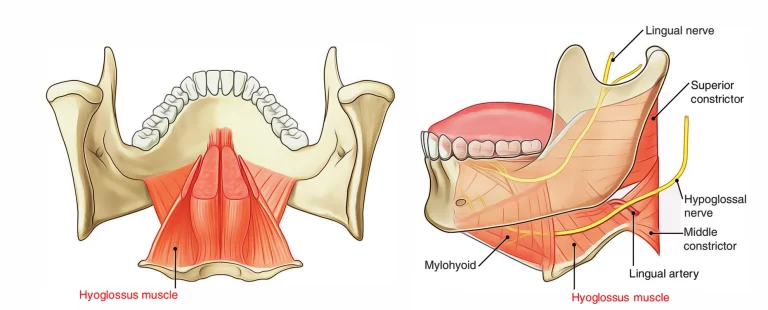
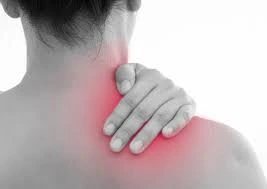
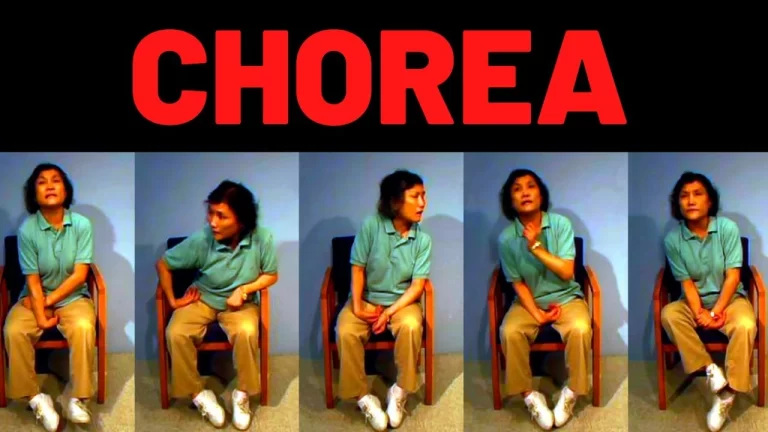
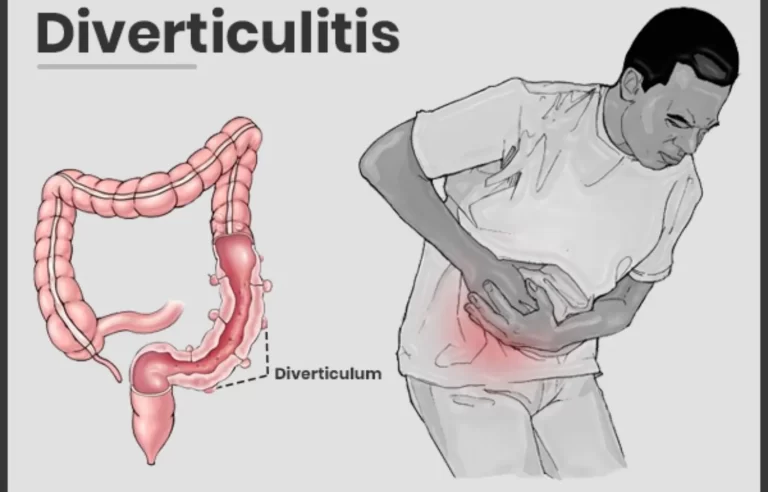
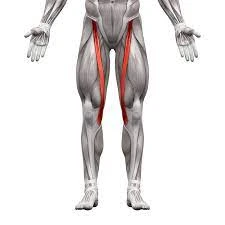
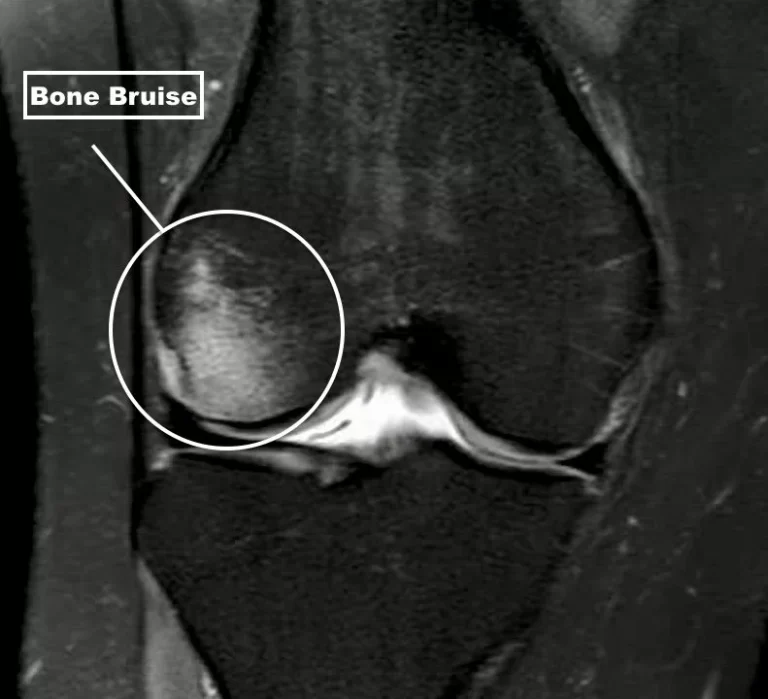
20 Comments